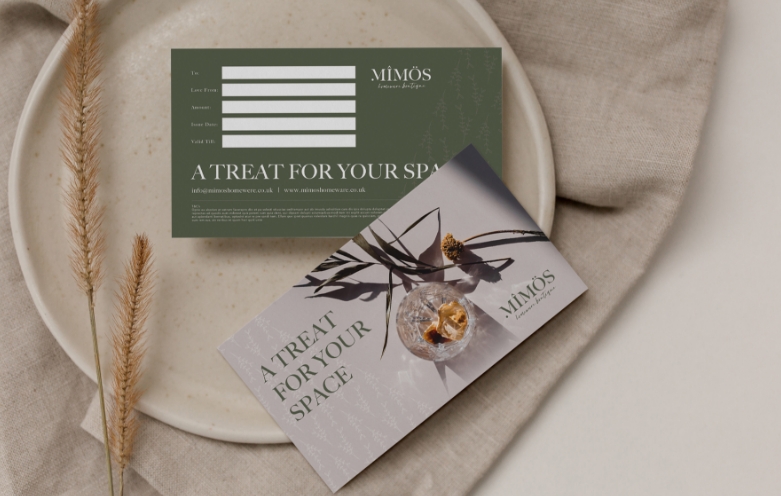
The Building Blocks of Beautiful Design: 8 Must-Know Graphic Design Elements
July 10, 2025 | GRAPHIC DESIGN
Good graphic design does more than look pretty, it tells a story, connects with your audience, and creates a lasting impression. Whether you’re building a brand identity, creating packaging, or designing for digital touchpoints, the best graphic design is thoughtful, strategic, and beautifully executed.
If you’re a brand owner trying to improve your design know-how or you’re thinking about outsourcing to a professional, understanding the core elements of design will help you make better creative decisions.
So, what really makes a design work?
Here are 8 key elements of graphic design that every brand should understand and how each one can help your visuals stand out for all the right reasons.
1. Line
Line is one of the most fundamental elements of design and one of the most powerful. Lines guide the eye, divide space, emphasise key elements and help build structure within a layout. They can be bold or delicate, rigid or fluid, uniform or textured.
In skilled hands, lines add rhythm and balance, helping your audience effortlessly navigate your design, whether that’s a website, a logo, or product packaging.
2. Shape
Shapes are the building blocks of design. They give form to ideas and structure to layouts. From geometric (think: circles, triangles, and squares) to organic, free-form shapes, each one tells a different story.
• Geometric shapes suggest stability, reliability, and precision, often used in minimalist or modern brands.
• Organic shapes feel natural and expressive ideal for beauty, wellness, or artisan brands.
• Abstract shapes like icons or symbols create immediate recognition, often used in branding or UI design.
A skilled designer uses shape intentionally to create harmony, interest, and visual storytelling.
3. Colour
Colour has the power to instantly evoke emotion, trigger memory, and shape perception. It’s one of the most impactful tools in a designer’s toolkit, especially when creating brand identities. Whether you’re crafting a calming skincare palette or a bold beauty brand aesthetic, understanding colour psychology is essential. For example:
Blue evokes trust and calm.
Green suggests freshness or natural ingredients.
Pink can feel youthful, soft, or playful.
A well-designed colour palette usually includes no more than 3–5 core shades (including tints and tones) to maintain consistency and cohesion across all brand assets.
4. Value
Value refers to the lightness or darkness of a colour, and it’s what adds depth, contrast and dimension to your design. Without value, designs can fall flat. With it, they gain richness and clarity. Think shadows that make shapes pop, subtle gradients that create realism, or contrast that draws your eye to a key headline or call-to-action.
Whether you’re building a visual hierarchy or adding mood, value brings an extra layer of sophistication to your design.
5. Form
Form is what takes a flat design and gives it structure. It’s how 2D shapes become 3D, or how layout and layering add weight and balance to your design. In branding, form can be created visually through the interplay of shape, colour and texture, or physically, through clever packaging design, embossing or materials. Great use of form makes your design feel more intentional and engaging, guiding your audience intuitively through the piece.
6. Texture
Texture adds tactility, even in digital spaces. It gives a sense of touch to a visual piece, creating richness and character. There are two main ways to bring texture into a design:
- Visual texture: Created digitally using patterns, brush strokes, or layered imagery. It can make a digital design feel handcrafted or organic.
- Physical texture: Applied through materials and print techniques like embossing, foiling, or soft-touch finishes – perfect for luxury packaging or premium brand collateral.
Texture is often the detail that elevates a design from good to exceptional – creating sensory connection and emotional impact.
7. White Space (Negative Space)
White space (also known as negative space) is the breathing room in a design. It helps reduce clutter, increase readability and create a sense of elegance and clarity. Contrary to the name, white space doesn’t have to be white — it can be any colour, texture, or background element that creates space around other content.
When used well, white space helps elevate your content, giving it room to shine. Think of brands like Apple or Aesop, their refined look is largely thanks to generous, considered use of space.
8. Typography
Typography isn’t just about choosing a nice font. It’s how your brand speaks visually. The right typography can instantly communicate your tone – whether that’s bold and luxurious, soft and modern, or classic and elegant.
Good typography considers:
• Font choice: Does it suit your brand voice?
• Hierarchy: Are headings and subheadings easy to distinguish?
• Spacing: Is it legible and well balanced?
Many designers also customise or adapt type to create a truly own-able brand identity. Think bespoke wordmarks or refined letter tweaks. These details add personality and uniqueness.
Graphic design is both an art and a science and these 8 elements are its foundation. Whether you’re designing a product label, brand identity or website, understanding these principles will help ensure your visuals are not just beautiful, but meaningful and effective too.
If you’re feeling inspired to elevate your brand visuals or want to see these design elements in action, you’re very welcome to explore our portfolio. And if you’re curious about how we could bring your ideas to life with thoughtful, high-impact design, feel free to get in touch – we’d love to hear about your project.
Categories
- SOCIAL MEDIA
- GRAPHIC DESIGN
- BRANDING

The Comments